
Lobivia ancistrophora is a species of cactus. It has a globular shape, few spines, with large, white flowers attached to long, green tubes. It occurs in Bolivia, at altitudes of 600–1800 metres. Under its synonym Echinopsis ancistrophora it has gained the Royal Horticultural Society's Award of Garden Merit.

Soehrensia formosa, is a species of Echinopsis found in South America. In north-western Argentina, Bolivia and northern Chile. First published in Cactac.: Handb. Kakteenk. 3: 1678 in 1959.

Echinopsis densispina, is a species of Echinopsis found in Argentina.

Echinopsis aurea, is a species of Echinopsis found in Argentina.
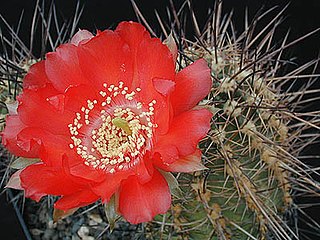
Echinopsis haematantha, is a species of Echinopsis found in Argentina and Bolivia.

Lobivia obrepanda, is a species of Lobivia found in Bolivia.
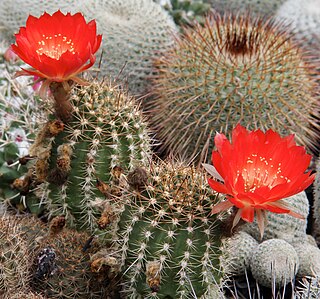
Lobivia hertrichiana is a species of Lobivia found in Bolivia and Peru.
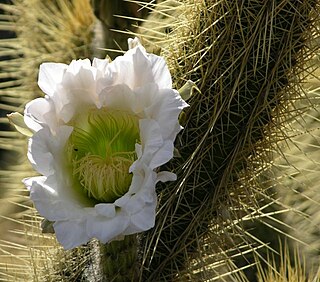
Soehrensia camarguensis, is a species of Soehrensia found in Bolivia.

Echinopsis tacaquirensis, is a species of Echinopsis found in Bolivia.

Setiechinopsis is a monotypic genus of cacti. Its only species, Setiechinopsis mirabilis, is native to Argentina.

Lobivia schieliana, is a species of Lobivia found in Bolivia and Peru.

Echinopsis chrysantha, is a species of Echinopsis found in Argentina.
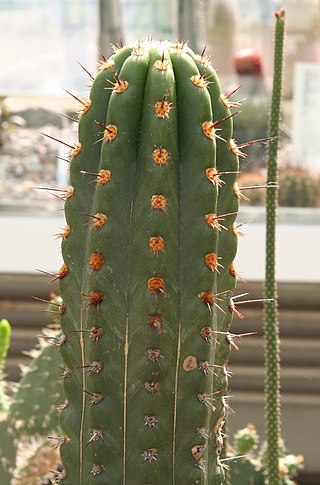
Echinopsis clavata, is a species of Echinopsis found in Bolivia.

Acanthocalycium rhodotrichum is a species of Acanthocalycium found in Argentina, Bolivia, Brazil, Paraguay, and Uruguay.

Cleistocactus buchtienii is a species of columnar cacti in the genus Cleistocactus.

Weberbauerocereus winterianus is a species of Weberbauerocereus from Peru.
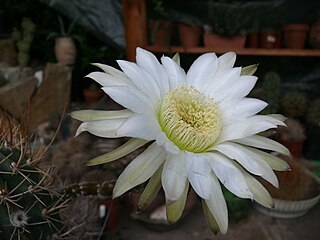
Acanthocalycium leucanthum is a species of flowering plant in the cactus family Cactaceae from Argentina.
Echinopsis marsoneri is a species of cactus from Argentina and Bolivia.

Oreocereus leucotrichus is a species of cactus native to Peru and Chile.
Weberbauerocereus churinensis is a species of cactus in the genus Weberbauerocereus, native to Peru.



















